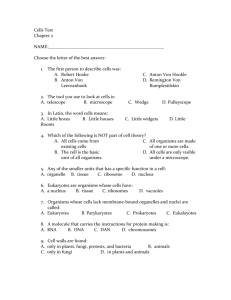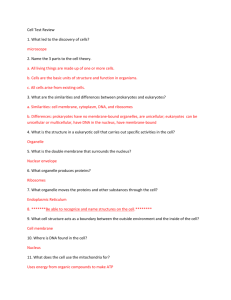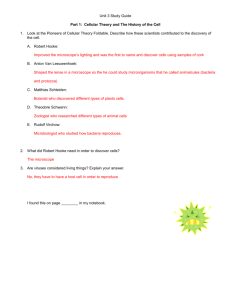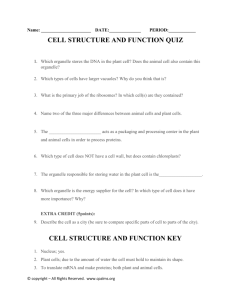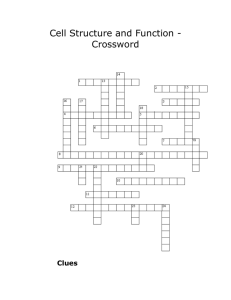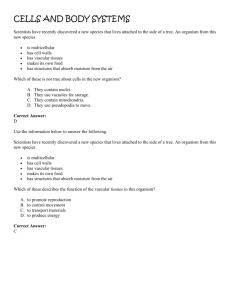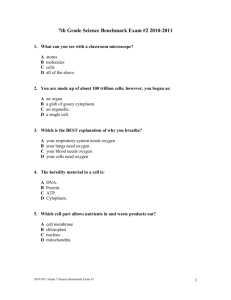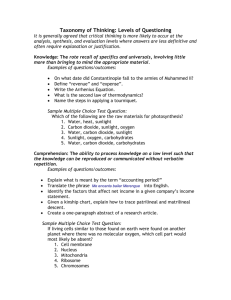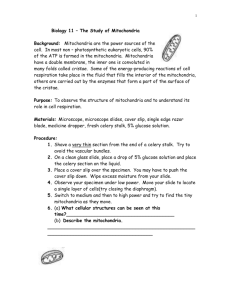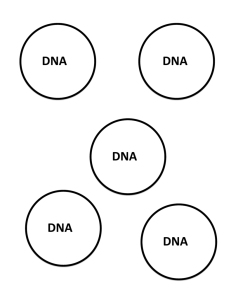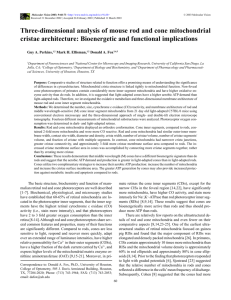Cell structure
advertisement
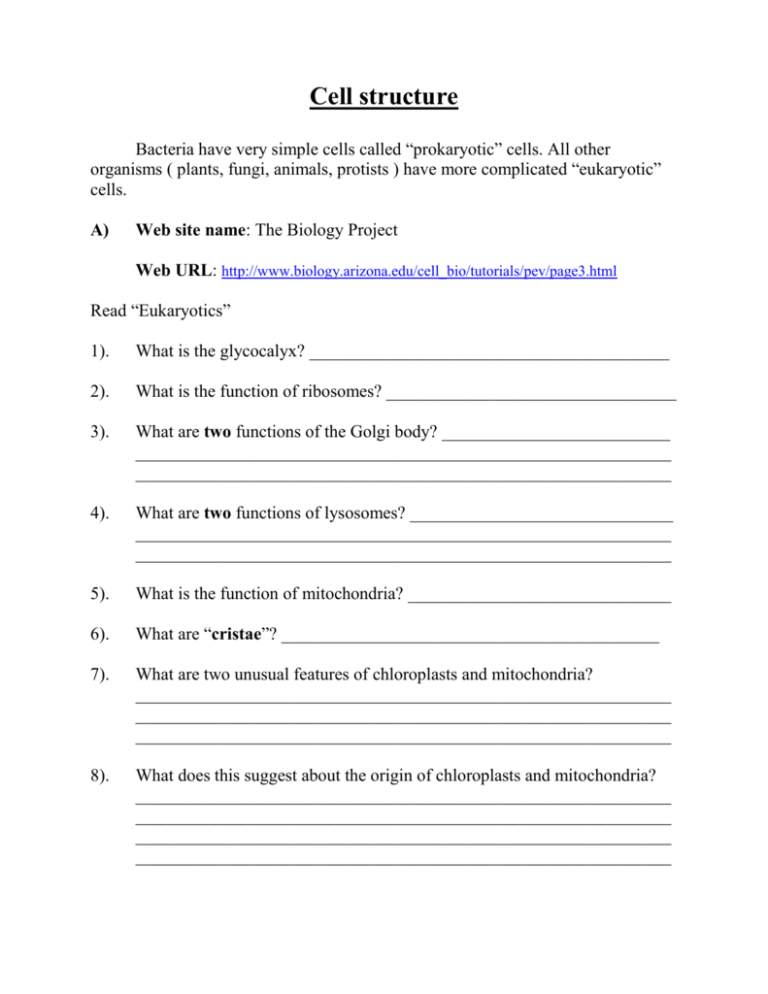
Cell structure Bacteria have very simple cells called “prokaryotic” cells. All other organisms ( plants, fungi, animals, protists ) have more complicated “eukaryotic” cells. A) Web site name: The Biology Project Web URL: http://www.biology.arizona.edu/cell_bio/tutorials/pev/page3.html Read “Eukaryotics” 1). What is the glycocalyx? _________________________________________ 2). What is the function of ribosomes? _________________________________ 3). What are two functions of the Golgi body? __________________________ _____________________________________________________________ _____________________________________________________________ 4). What are two functions of lysosomes? ______________________________ _____________________________________________________________ _____________________________________________________________ 5). What is the function of mitochondria? ______________________________ 6). What are “cristae”? ___________________________________________ 7). What are two unusual features of chloroplasts and mitochondria? _____________________________________________________________ _____________________________________________________________ _____________________________________________________________ 8). What does this suggest about the origin of chloroplasts and mitochondria? _____________________________________________________________ _____________________________________________________________ _____________________________________________________________ _____________________________________________________________ B) Web site name: University of Illinois, Virtual Cell Web URL: http://www.life.uiuc.edu/plantbio/cell/ Under “Search” click on the down button, highlight “nucleus”, then click on the main diagram on the left of the screen. 9). What does the nucleus contain? ___________________________________ Click on “EM image” and click on the main diagram again. 10). Are the pores regularly, or irregularly, spaced? _______________________ 11). What is the combination of DNA and proteins called? __________________ Under “Search” click on “chloroplast” then click on the main diagram again. 12). What does “chloros” mean? ______________________________________ 13). What else is produced by photosynthesis apart from sugars? _____________ Click on “Cut” then click on the main diagram. Click on “EM image” then click on the main diagram again. 14). What are “grana”? ______________________________________________ 15). What enzyme is found in the stroma? _______________________________ Under “Search” click on “mitochondrion” then click on the main diagram again. 16). What does the mitochondrion produce? _____________________________ Click on “Cut” then click on the main diagram. 17). Where does the Krebs cycle take place? _____________________________ 18). What are “cristae”?______________________________________________ Click on “EM image” then click on the main diagram again. 19). Where is NADH oxidized? _______________________________________ C) Web site name: Cells Alive (Nucleus) Web site address: http://www.cellsalive.com/cells/cell_model.htm Click on “Animal Cell”, then click on “Nucleus” 20). What is the nucleus surrounded by? ________________________________ 21). How does the nucleus communicate? _____________________________________________________________ 22). Why is a liver cell different from a muscle cell? _____________________________________________________________ Click on “Nucleolus” 23). What does the nucleolus produce? ____________________________________________________________ D) Web site name: Cells Alive (Animation) Web site address: http://www.cellsalive.com/cells/cell_model.htm Click on “Animal Cell”, then “Mitochondria” 24). What is the function of mitochondria? _____________________________ _____________________________________________________________ _____________________________________________________________ 25). What is one similarity between the mitochondria and nucleus? _____________________________________________________________ 26). Why are the cristae folded? _______________________________________ 27). What is the primary energy source for the cell? ______________________ Click on “Cell membrane” 28). What does “hydrophilic” mean? __________________________________ ____________________________________________________________ 29). What color are the proteins in the diagram? _________________________ 30). Which ions move through the proteins? _____________________________ _____________________________________________________________ Click on “Smooth Endoplasmic reticulum” 31). The ER is a continuation of ___________________ __________________ 32). What is the function of smooth endoplasmic reticulum in muscle cells? _____________________________________________________________ 33). What is the function of smooth ER in liver cells? ____________________________________________________________ Click on “Cytoskeleton” 34) What is the primary importance of the cytoskeleton? ____________________________________________________________ 35) What color are the stress fibers stained in the photograph? _____________ Click on one more organelle listed near the bottom of the screen. 36) Which organelle did you click on? ________________________________ 37) Summarize the information about this organelle: _____________________________________________________________ _____________________________________________________________ _____________________________________________________________ _____________________________________________________________


